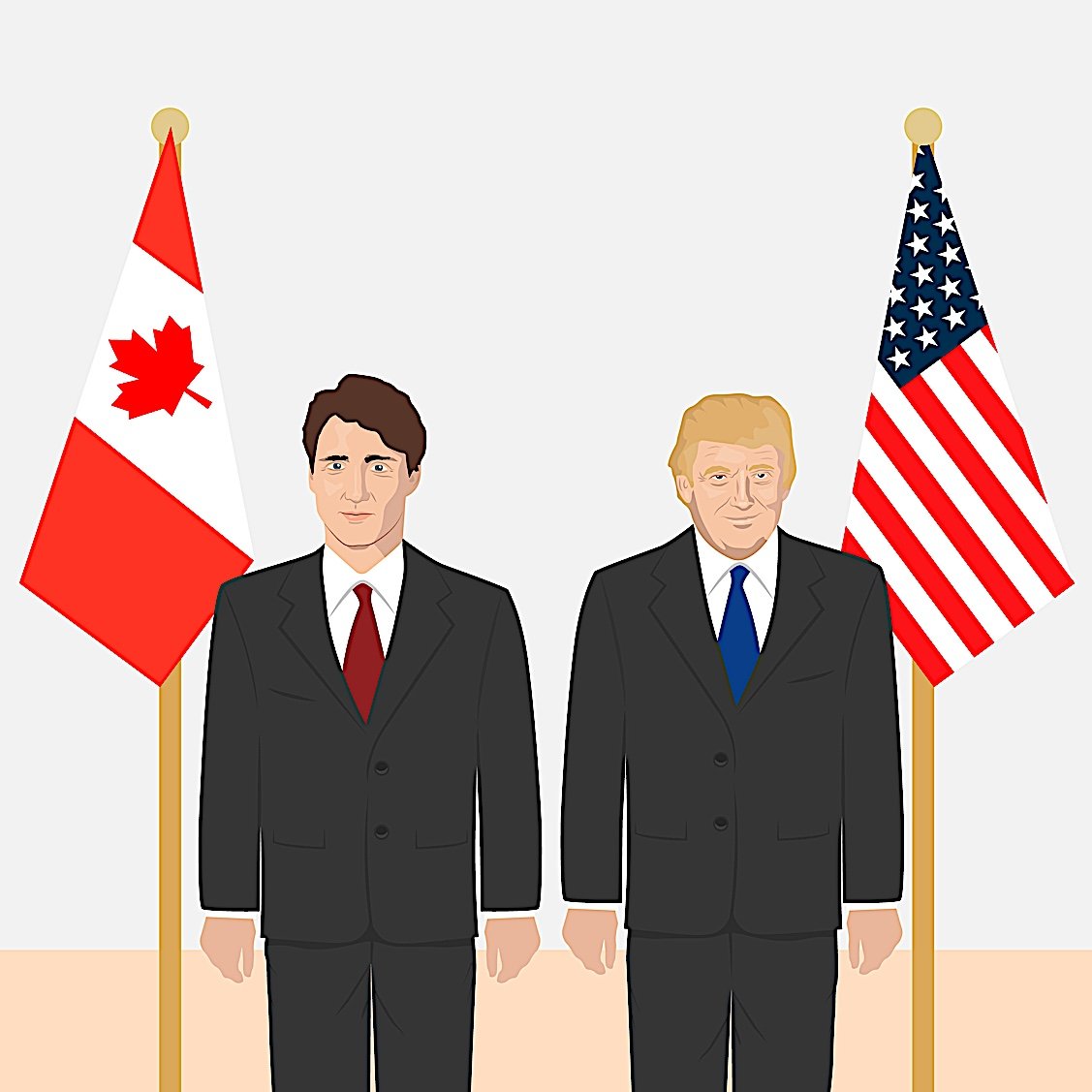Hard negotiating and threats ultimately led to a three-way free-trade deal, with a nice bump in the Canadian dollar and stock markets as bonuses. The deal is good news for Canada, generally, bad news for the Canadian dairy industry. Ultimately, Prime Minister Justin Trudeau saved face when the U.S. Trade representatives — and President Trump — didn’t cross his red-line on the sand. No, the redline was not dairy, as it turned out, it was “independent dispute resolution” — to avoid arbitrary duties in future.
Prime Minister Justin Trudeau of Canada tweeted:
“A good deal for Canada that will strengthen the middle class, grow the economy, create new jobs and more opportunities for Canadian businesses, workers, and families.”
President Trump triumphantly tweeted:
“Late last night, our deadline, we reached a wonderful new Trade Deal with Canada, to be added into the deal already reached with Mexico. The new name will be The United States Mexico Canada Agreement, or USMCA. It is a great deal for all three countries, solves the many deficiencies and mistakes in NAFTA, greatly opens markets to our Farmers and Manufacturers, reduces Trade Barriers to the U.S. and will bring all three Great Nations together in competition with the rest of the world. The USMCA is a historic transaction!

With a clumsy new name — it doesn’t quite roll off the tongue like NAFTA — the United States Mexico Canada Agreement (USMCA) was a win for the auto-sector, but not necessarily for the steel industry. It was a win politically for both Prime Minister Trudeau and President Trump, who made a big show of strength. Trudeau stood to gain either way: by showing strength with his ‘line in the sand’ approach, he probably scored political points and winning a deal doubled down. The jury on the steel tariffs is still out; there’s a good chance of a sidebar reconciliation. It was a definite lose for the dairy industry, although most experts agree the three parties — mostly Canada — had to make concessions. Is it a good deal? Time will tell, but, regardless, it is good news for industries in Ontario and Canada — especially if the steel tariffs ease as a “reward” for signing. (Call it a signing bonus? But there’s no guarantee.)
Canada dodged the Trump bullet of 20 to 25% duties on cars and auto parts under Section 232 national security tariffs.
What are the critical differences between NAFTA and USMCA
• USMCA increases regional content to 75% from 62.5%.
• A percentage of factors must pay workers at least $16 per hour — probably good for Canada, not so good for Mexico?
• The U.S. won access to 3.5% of Canada’s Dairy market.
• Canada removed barriers to milk, cheese and other dairy products coming in from the U.S.
• Updated rules (from NAFTA) for dealing with digital and intellectual property.
• Pharmaceutical companies gain exclusive 10-year marketing rights.
• Bans any duties on software, music and ebooks.
• USMCA comes up for review every six years.
Stocks up after new USMCA deal
The markets like the new deal, although any agreement would have resulted in a bump in the auto sector, after the long stand-off.
Three countries saw a rise in stocks, with the Dow rising almost 0.8% or 200 points. In later day trading, S&P and Nasdaq were mixed. Not every sector, of course, benefited from the deal:
• GM (GM) and Ford (F) both rose more than 1%
• Fiat Chrysler (FCAU) rose almost 3%
One of the reasons remains trade tension with China. David Kelley of JPMorgan explained, “While the U.S. has reached a new trade agreement with Mexico and Canada, growing trade conflict between China and the U.S. threatens economic growth in both countries.”































